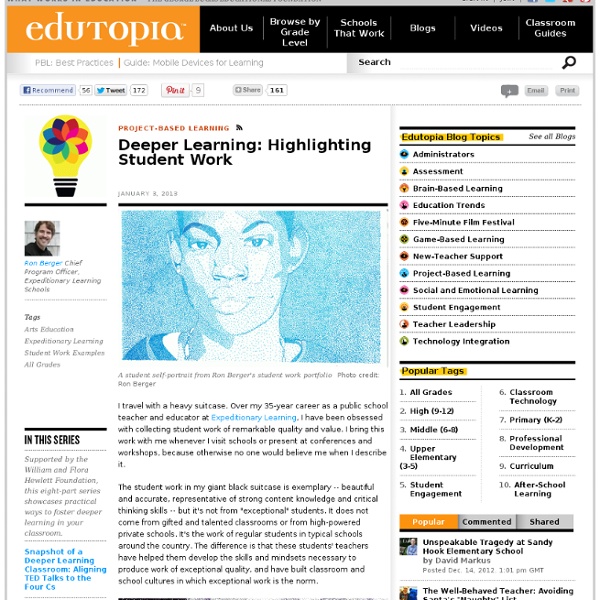Value of Student Work

A Collaborative Classroom
What's ideal when it comes to collaboration in our classrooms? Here's one coveted scenario: several children gathered at a table engaged in a high-level task, discussing, possibly debating an issue, making shared decisions, and designing a product that demonstrates all this deeper learning. As teachers, we'd love to see this right out the gate, but this sort of sophisticated teamwork takes scaffolding. In preparing our students for college and careers, 21st century skills call on us to develop highly collaborative citizens -- it's one of the 4 Cs, after all. So how do we begin this scaffolded journey? Establish Group Agreements Deciding on group norms, or agreements, right at the get go will give each student a voice and provide accountability for all. Accountability is an important factor in group working agreements. Teach Them How to Listen Good listeners are both rare and valued in our culture. Save The Last Word is a great activity that allows students to practice listening.
Reframing Worksheets
Worksheets matter! I know we hear a lot of talking points that tell us to get rid of them, but I think it's much more complicated than that. That call for "no more worksheets" comes from a place where that is all there is. A recent visit to a PBL school jumpstarted my brain on this issue. Worksheets That Model a Career Tool Students consistently worked on a piece of paper shown below. As we design worksheets, let's consider making them look like the real-world work that students are doing -- or could be doing. Worksheet used at ACE Leadership Academy Credit: Andrew Miller Other Tips for Worksheets Include the Driving Question Where Students Can See It Like changing the look of the worksheet, this piece may seem too simple to make a real change. Rubric and Reflection Remember that a rubric can actually be just another quality indicator. Scaffolding the Levels of Questions
Vocabulary Instruction
We know that there is a strong relationship between vocabulary and reading comprehension. Systematic vocabulary instruction is an integral part of a K-12 comprehensive literacy framework for instruction. I consider it a privilege to have supported many teachers, coaches, & administrators in building a community that values word learning across classrooms and content areas. Common characteristics of effective vocabulary instruction have been documented in numerous professional journals and books. Effective vocabulary instruction across grade levels and content areas is key. I write frequently about vocabulary. You can put this infographic to use tomorrow. Download today’s tool by clicking on the tag at the end of this post. Like this post? Please read our Reblogging and Reposting Policies here before reblogging or reposting. Have you found these posts helpful in supporting your literacy efforts? The following two tabs change content below. Kimberly
10 Rules for Students and Teachers (and Life) by John Cage and Sister Corita Kent
by Maria Popova “Nothing is a mistake. There’s no win and no fail, there’s only make.” Buried in various corners of the web is a beautiful and poignant list titled Some Rules for Students and Teachers, attributed to John Cage, who passed away twenty years ago this week. The list, which can be found in Sister Corita’s Learning by Heart: Teachings to Free the Creative Spirit (public library), touches on a number of previously discussed themes and materials, including Bertrand Russell’s 10 commandments of teaching, the importance of embracing uncertainty, the pivotal role of work ethic, the intricate osmosis between intuition and intellect, and the crucial habit of being fully awake to everything. RULE ONE: Find a place you trust, and then try trusting it for awhile.RULE TWO: General duties of a student — pull everything out of your teacher; pull everything out of your fellow students.RULE THREE: General duties of a teacher — pull everything out of your students. Donating = Loving
Related:
Related:



